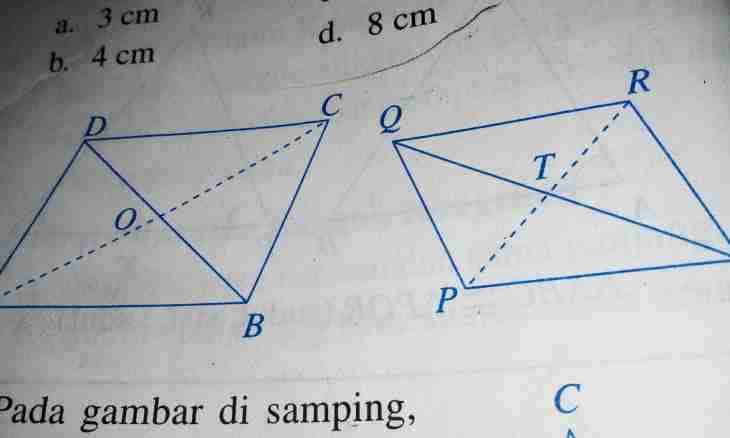It is necessary to make the reservation at once that the trapeze under such circumstances will not manage to be restored. Infinitely there is a lot of them as the exact description of a figure on the plane requires a task not less than three numerical parameters.
Instruction
1. The objective and the main positions of its decision are shown by fig. 1. Let's assume that the considered trapeze is ABCD. In it lengths of diagonals of AC and BD are given. Let them be set by vectors of p and q. Means lengths of these vectors (modules), |p| and |q|, respectively.
2. To simplify the solution of an objective, a point And it is necessary to place in the beginning of coordinates, and a point of D – on abscissa axis. Then these points will have the following coordinates: A(0, 0), D (xd, 0). Actually the number of xd coincides with the required length of the basis of AD. Let |p| =10 and |q| =9. As according to construction a vector of p lie on a straight line the EXPERT, coordinates of this vector are equal to Page point coordinates. It is possible to determine by a trial and error method that the point With with coordinates (8, 6), meets a statement of the problem. Owing to parallelism of AD and VS, the point In is set by coordinates (xb, 6).
3. The vector of q lies on BD diagonal. Therefore its coordinates of q= {xd-xb, yd-yb } == {xd-xb,-6 }. |q| ^2=81 and |q| ^2=(xd-xb) ^2 +36=81. (xd-xb) ^2=45, xd=3sqrt (5) +xb. As it was already told at the beginning, there are not enough basic data. In that solution which is proposed now xd depends on xb, that is, at least, it is necessary to set xb. Let xb=2. Then xd=3sqrt (5)-2=4.7. It is also length of the lower basis of a trapeze (on construction).

